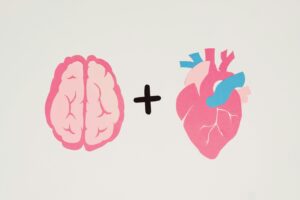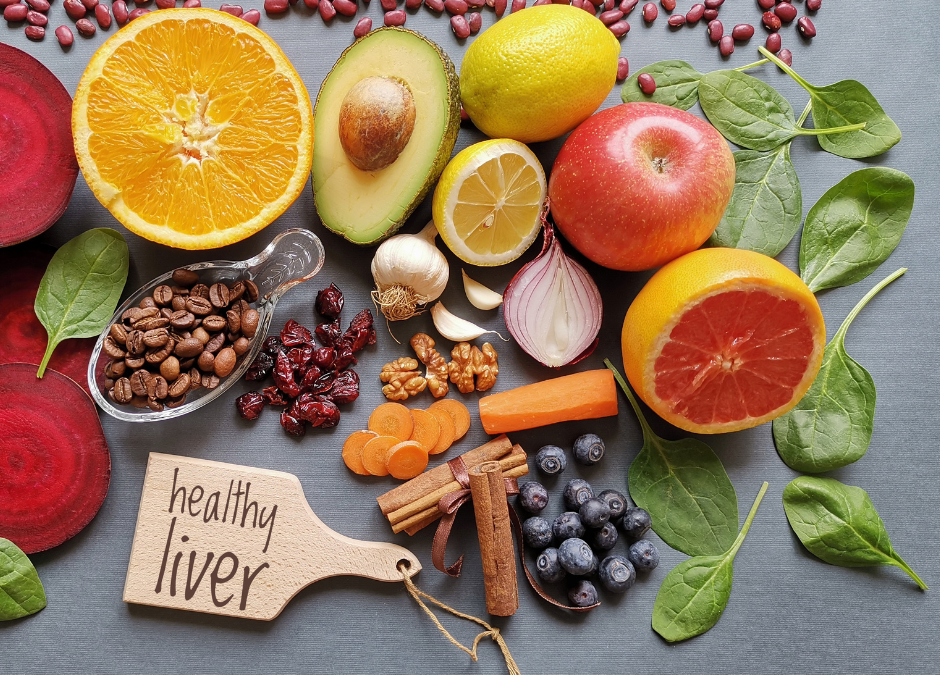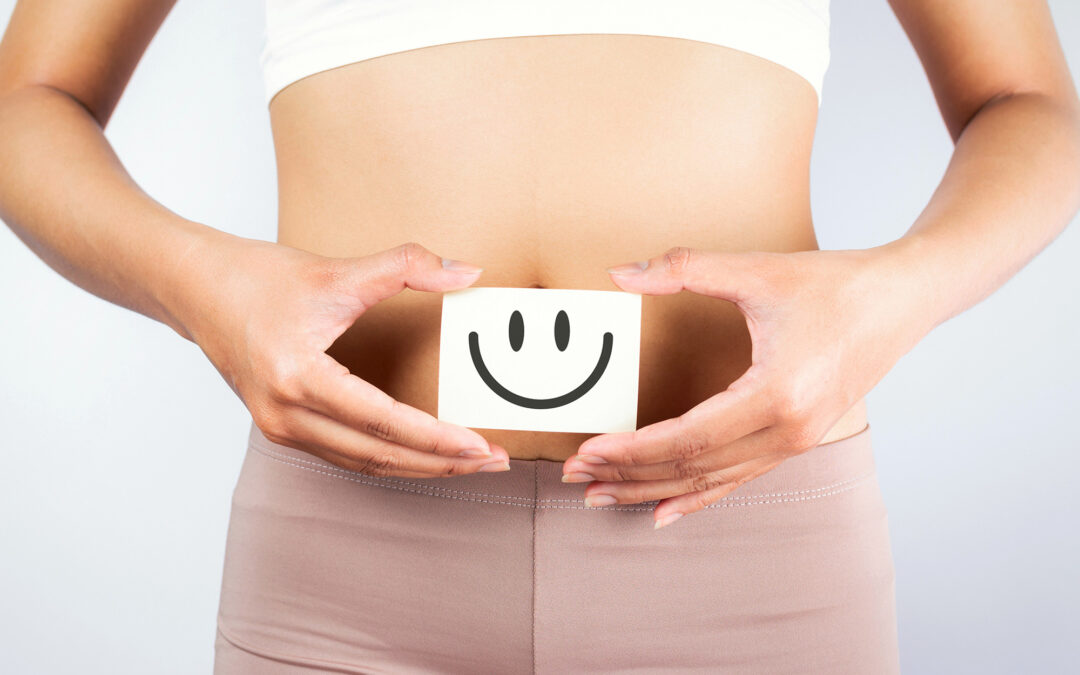
by Leslie Moldenauer | | Body, Cleansing
The Silent Killer Hiding Behind Productivity: Chronic Stress and Burnout
You pride yourself on getting things done, crossing off items on that endless to-do list, and holding everyone else together. But at what cost? Chronic stress is breaking you down, and the very productivity you’re glorifying is eroding your health—bit by bit. Women are conditioned to push until there’s nothing left, but if you don’t stop to listen to your body’s whispers, those whispers will become screams.
Let’s break the cycle.
Why Women Are Trapped in the Productivity Cycle
From a young age, many women are taught that their worth is tied to how much they do for others. We are praised for multitasking, for “having it all,” and for sacrificing ourselves to keep things running smoothly. We internalize this, believing that rest equals laziness and asking for help is a sign of failure. Going back eight years ago, this was me, and now I have seen others do it to the point of illness.
Psychologically, this cycle is driven by:
- Perfectionism: The belief that if you don’t do it yourself, it won’t be done right.
- Fear of Judgment: Worry that others will think less of you if you take a break or set boundaries.
- Unmet Needs: Over time, this leads to resentment when help is not freely offered, even though we don’t ask clearly or consistently for it.
We end up projecting our frustration onto others. We become bitter when people fail to notice how much we’re carrying when in reality, we’ve conditioned them to believe we have everything under control.
The Whispers Your Body Is Sending You
Before chronic stress and burnout become a full-blown crisis, your body sends subtle warnings. These signs are often ignored because they don’t seem “serious enough”—until they are.
- Fatigue: That deep exhaustion no amount of sleep can cure.
- Brain Fog: Difficulty focusing, forgetfulness, and mental sluggishness.
- Irritability and Anxiety: Feeling constantly on edge or emotionally reactive.
- Digestive Issues: Bloating, discomfort, or unpredictable digestion linked to chronic stress.
- Hormonal Imbalances: Irregular cycles, increased PMS symptoms, or low libido.
- Muscle Tension and Pain: Chronic tightness in the neck, shoulders, or lower back.
Ignoring these symptoms can lead to adrenal fatigue, autoimmune issues, and long-term hormonal disruptions.
What You Can Do to Break the Cycle
Here’s where transformation begins. It’s not about adding more tasks to your plate but shifting your mindset and daily habits. There are a lot of ideas here, be sure to bookmark for later.
Find Radical Compassion for Yourself
- Acknowledge Your Efforts: Recognize that you are doing your best. You are enough.
- Rewrite the Narrative: Your worth is not tied to productivity. You deserve rest and joy, simply because you exist.
- Forgive Yourself: Stop shaming yourself for needing a break or asking for help.
Practice:
- Create a daily affirmation like, “Rest is a gift I give myself. I deserve peace and balance.”
Redefine Success
- Start each day by identifying one priority that aligns with your long-term well-being.
- Replace to-do lists with “to-be” lists—focus on how you want to feel, not what you need to accomplish.
Fuel Your Brain and Body
Stress depletes essential nutrients, so replenishing them is key to recovery.
- Adrenal Support:
- Focus on foods rich in B vitamins, magnesium, and vitamin C, such as leafy greens, avocados, and citrus fruits.
- Incorporate adaptogenic herbs like ashwagandha and rhodiola to regulate cortisol.
- Brain Fuel:
- Eat healthy fats such as omega-3s (salmon, chia seeds, walnuts) to support cognitive function. Look into mushroom supplements, ideally the fruiting body to maximize your brain health.
- Stay hydrated and avoid excess caffeine, which stresses your adrenal glands.
Create Restorative Rituals
- Morning Check-in: Spend 5-10 minutes journaling or meditating before diving into your day.
- Mid-Day Pause: Take a 5-minute break to breathe deeply and stretch.
- Evening Wind-Down: Turn off electronics an hour before bed and engage in calming activities like reading or gentle stretching.
Reconnect with Your Body
When chronic stress and burnout take over, it disconnects you from your body’s natural rhythms and instincts. Reconnection doesn’t require drastic measures—just small, mindful actions that remind your nervous system it’s safe to rest and heal.
Here are unique, actionable steps you can take today:
Anchor Yourself with a “Body Check-In Ritual”
Set a timer for three times a day (morning, midday, and evening). When the timer goes off:
- Close your eyes and take a deep breath.
- Ask yourself, “What does my body need right now?”
- Is it water? A stretch? Deep rest?
- Scan your body from head to toe. Notice any tension (jaw, shoulders, stomach, hips) and intentionally soften those areas as you exhale.
This practice cultivates awareness and builds trust between your mind and body.
Engage in 4-7-8 Breathing to Calm Your Nervous System
This simple breathwork technique coined by Dr. Andrew Weil is powerful for resetting your body’s stress response.
- Inhale deeply for 4 seconds through your nose.
- Hold the breath for 7 seconds.
- Exhale slowly through your mouth for 8 seconds.
- Repeat 3-5 times.
This practice activates the parasympathetic nervous system, signaling your body to shift out of “fight or flight” mode. It’s especially helpful during moments of overwhelm or before sleep.
Try Sensory Grounding with Nature Elements
If you’re feeling disconnected and anxious, reawaken your senses by immersing yourself in nature. If you can’t get outside, use items at home.
Steps:
- Touch natural textures: Hold a leaf, shell, or crystal. Feel its temperature and texture.
- Focus on your surroundings: Listen for distant sounds (wind, birds) and near ones (your breath).
- Smell essential oils like lavender, rosemary, or pine to evoke calming feelings.
- Visualize yourself rooted like a tree, with energy from the earth stabilizing you.
This technique helps bring you into the present moment, countering anxious thoughts.
Reclaim Your Energy with the “Release and Refill” Method
When you’re carrying stress, tension builds in your muscles, and energy gets stuck. This method involves two steps:
Step 1 – Release:
- Stand up and shake your body gently for 60 seconds. Focus on areas where tension is trapped (shoulders, neck, lower back).
- Imagine releasing the stress with each movement, like shedding heavy layers.
Step 2 – Refill:
- Place your hand on your heart. Take a slow, deep breath and say, “I am safe. I am enough.”
- Visualize filling yourself with golden light or a wave of calm energy that nourishes every cell in your body.
This exercise helps you release emotional tension and recharge your system.
Practice Intuitive Movement
Rather than forcing structured exercise, give your body permission to move how it wants to.
Steps:
- Play calming or rhythmic music.
- Let your body lead—sway, stretch, or dance freely without judgment.
- Focus on how the movement feels rather than how it looks.
This practice fosters body awareness and helps you express emotions physically, especially when words aren’t enough.
The Heart-Mind Connection Exercise

When stress keeps you in your head, this exercise helps reconnect your thoughts and emotions with your physical body.
Steps:
- Sit quietly and place one hand on your heart and the other on your stomach.
- Take 3 deep breaths and silently say, “I am here. I am listening.”
- Ask your heart, “What message do you have for me today?”
- Be patient and notice any feelings, memories, or intuitive nudges that arise.
This reflective practice helps you tap into your inner wisdom, fostering trust in yourself.
Create a Rest Ritual with Weighted Pressure
Weighted pressure on the body can help calm an overactive nervous system.
Steps:
- Use a weighted blanket or place a heavy object (like a warm towel) across your chest and shoulders while lying down.
- Focus on slow breathing and feel the sensation of pressure grounding you.
This can be deeply comforting and help reduce anxiety, especially before bed.
Stimulate Your Vagus Nerve with Cold Exposure
The vagus nerve is critical for regulating your body’s stress response. Activating it helps reduce inflammation and improve emotional resilience.
Steps:
- Splash cold water on your face for 20-30 seconds or take a cold shower rinse at the end of your shower.
- Breathe deeply through the sensation of cold to strengthen your nervous system’s recovery.
This practice trains your body to handle stress more efficiently.
Set Micro-Boundaries to Prevent Overwhelm
Many women feel disconnected from their bodies because they’re constantly overextended. Start small by setting “micro-boundaries” each day.
Examples:
- Say no to one non-essential task.
- Pause notifications on your phone for one hour.
- Take a mini-break every two hours, even if it’s just to breathe or stretch.
These small acts of self-protection build your capacity to prioritize your well-being.
Reclaim Your Sense of Play and Wonder
Chronic stress kills creativity and joy. Reconnect with your inner child by engaging in activities that spark curiosity and fun.
Ideas:
- Create art, doodle, or paint without aiming for perfection.
- Spend time stargazing or cloud-watching.
- Laugh—watch a funny video or call someone who lifts your spirits.
Play helps shift your nervous system from survival to thriving, where healing and restoration can occur.
Your body is always speaking to you, guiding you back to balance. It’s time to start listening—not with judgment, but with compassion. These practices may seem simple, but their impact is profound. Each small act of self-connection builds the foundation for deep healing and resilience.
You are not broken. You are capable of incredible transformation. ✨
Your Journey from Healing to Thriving
You’ve read this far because something inside you is ready to shift—ready to let go of survival mode and embrace a life of balance, joy, and deep connection. My Healing to Thriving Workbook is designed to guide you through that transformation.
Through gentle practices, journaling prompts, and soulful rituals, you’ll reconnect with your inner wisdom, rebuild your resilience, and nurture radical self-compassion. This isn’t about doing more—it’s about rediscovering the version of you who already has the power to thrive.
You are not alone on this journey. Healing starts with one step. ✨
The Lost Art of Breathing: Why Have we Forgotten?
Reference
Jungmann M, Vencatachellum S, Van Ryckeghem D, Vögele C. Effects of Cold Stimulation on Cardiac-Vagal Activation in Healthy Participants: Randomized Controlled Trial. JMIR Form Res. 2018 Oct 9;2(2):e10257. doi: 10.2196/10257. PMID: 30684416; PMCID: PMC6334714.

by Leslie Moldenauer | | Body
Protein is a cornerstone of nutrition, but are we truly choosing the healthiest options? In the United States, conventionally raised meat and dairy—packed with hormones and antibiotics—have led to rising rates of gut health issues, food sensitivities, and chronic illness. Trendy diets like keto, paleo, and carnivore offer temporary solutions but fail to address long-term health without incorporating regenerative detoxification. Discover how choosing high-quality protein, detoxifying daily, and learning from the world’s healthiest countries can reduce chronic disease risks, combat the surge in colon cancer, and restore optimal gut health.
The Dark Side of America’s Protein Sources
Protein is often touted as the cornerstone of a healthy diet, but not all protein sources are created equal. In the U.S., industrial farming practices prioritize quantity over quality, leading to potentially serious health implications.
- Conventionally Raised Meat and Dairy: Most meat and dairy products in the U.S. are produced using industrial farming methods. These often involve administering hormones to accelerate growth and antibiotics to prevent disease in overcrowded conditions. Studies have linked these practices to antibiotic resistance and an increased risk of chronic illnesses such as heart disease and cancer (CDC, 2023).
- Nutritional Degradation: Grass-fed, grass-finished, pasture-raised, and wild-caught proteins are significantly higher in nutrients like omega-3 fatty acids, vitamin E, and conjugated linoleic acid (CLA) (PubMed, 2019). Unfortunately, these higher-quality sources are often inaccessible or overlooked. Don’t be misled by green-washed phrases like “natural” or “humanely raised” on packaging, as they often fail to meet the nutritional and ethical standards you seek.
In contrast to the U.S., countries like Japan, Switzerland, Iceland, Sweden, and Australia have stricter regulations on food quality and farming practices. They prioritize whole, minimally processed foods, which contribute to their populations’ higher life expectancies and lower rates of chronic disease.
This is not great news for the health of our food, but knowledge is power. You can still feel empowered to make healthy choices!
The Carnivore Diet Done Right
The carnivore diet has surged in popularity, with proponents citing benefits such as reduced inflammation and improved energy levels. While it can be effective as a short-term reset, most people miss the mark on execution.
- The Importance of Quality: The carnivore diet can support health only when focused on nutrient-dense foods like grass-fed meats, pastured poultry, and raw, organic cheeses. Unfortunately, many individuals rely on conventionally raised meats like the ones I mentioned earlier, which may exacerbate inflammation rather than reduce it.
- Short-Term Solution: Carnivore can be an excellent dietary reset, allowing the gut to heal and inflammation to subside. However, it is not intended as a long-term solution, as it lacks essential micronutrients found in plant-based foods. If you are looking for a carnivore reset, but sure to add plenty of healthy fats and clean water to keep your digestive system running smoothly.
Unmasking the U.S. Food Pyramid and Toxic Food System
The outdated USDA food pyramid continues to mislead the public, emphasizing grains and processed carbohydrates while undervaluing healthy fats and proteins. This flawed guidance contributes to obesity and chronic illness.
Additionally, the U.S. food system allows harmful additives and chemicals—many of which are banned in other countries. Artificial dyes, preservatives, and high-fructose corn syrup are staples in American diets, undermining health at every level (EWG, 2023). In contrast, nations like Japan and Switzerland enforce strict food regulations, prioritizing natural, nutrient-dense foods.
The solution? Advocate for food system reform while making informed grocery store choices. Choose organic, local, and minimally processed options whenever possible.
Regenerative Detoxification: The Key to Long-Term Wellness
Our bodies are struggling to keep up with the toxic load in a world increasingly burdened by environmental toxins and nutrient-deficient foods. Regenerative detoxification is a holistic approach to cleansing and restoring the body at a cellular level, focusing on removing toxins, repairing damaged systems, and rebuilding vibrant health.
What is Regenerative Detoxification?
Unlike trendy cleanses or quick detox diets, regenerative detoxification is a comprehensive and sustainable approach to supporting the body’s natural detox pathways. It involves addressing the root causes of toxicity, removing harmful substances, and rebuilding the body’s ability to function optimally.
Key components of regenerative detoxification include:
- Eliminating toxins: Removing environmental toxins, processed foods, and harmful chemicals from the diet and lifestyle.
- Supporting the body’s detox pathways: Enhancing the liver, kidneys, lymphatic system, and colon to process and eliminate waste efficiently.
- Cellular repair and regeneration: Using nutrient-dense foods, herbs, and supplements to heal and strengthen damaged tissues.
- Restoring gut health: Prioritize probiotics, prebiotics, and gut-healing practices to rebuild the microbiome. This process may take longer for individuals managing chronic disease, obesity, or a history of antibiotic use.
Why is Regenerative Detoxification Important?
Modern living exposes us to unprecedented toxins—from pesticides in our food to heavy metals in our water and chemicals in household products. Over time, these toxins accumulate, overwhelming the body’s natural detox systems and contributing to chronic illnesses like autoimmune disorders, hormonal imbalances, and cancer.
Reasons we should embrace regenerative detoxification include:
- Balancing the toxic load: While the body is equipped to handle certain toxins, today’s environment surpasses its capacity, leading to inflammation and disease.
- Enhancing energy and vitality: Removing toxins can reduce the burden on the liver and other organs, allowing the body to focus on energy production and repair.
- Preventing chronic diseases: Regular detoxification lowers the risk of diabetes, heart disease, and neurological disorders by reducing oxidative stress and inflammation.
How to Practice Regenerative Detoxification Daily
Daily detox practices are simple yet powerful ways to reduce toxic buildup and support overall health.
Dietary Practices:
- Consume organic, whole foods: Reduce exposure to pesticides and artificial additives.
- Hydrate with clean water: Filtered water helps flush toxins from the body. Drink extra water with added electrolytes or fresh (not boxed) coconut water as you remove processed foods from your diet.
- Incorporate detoxifying foods:
- Cruciferous vegetables (broccoli, kale) support liver detox enzymes.
- Fiber-rich foods (chia seeds, oats) promote healthy bowel movements.
- Antioxidant-rich fruits (berries, citrus) combat free radicals.
Berry Antioxidant Smoothie with Coconut Water
Ingredients:
1 cup fresh or frozen mixed berries (blueberries, strawberries, raspberries)
1 cup fresh coconut water
1 tablespoon chia seeds (Ideally soaked in coconut water for 20 minutes to allow them to swell)
1 handful of spinach or kale (optional for an extra detox boost)
Juice of 1/2 lemon (for added antioxidants and flavor)
Ice cubes (optional, for a chilled smoothie)
Instructions:
Add all the ingredients to a blender.
Blend until smooth, adding more coconut water if needed for desired consistency.
Pour into a glass and enjoy immediately as a refreshing, antioxidant-packed drink.
Herbal Detox Tea
Ingredients:
1 teaspoon dried dandelion root
1 teaspoon dried milk thistle seeds
1 teaspoon fresh grated ginger (or 1/2 teaspoon ground ginger)
1/2 teaspoon turmeric powder (or 1/2-inch fresh turmeric root, sliced)
1 teaspoon raw honey (optional, for sweetness)
3 cups filtered water
Instructions:
Combine the dandelion root, milk thistle seeds, ginger, and turmeric in a small saucepan with the filtered water.
Simmer this blend for 10-15 minutes.
Strain the tea into a mug and stir in honey if desired.
Enjoy warm as a soothing and detoxifying beverage throughout the day.
Try my Love Your Liver tea!
Lifestyle Practices:
- Move your body: Exercise and activities like yoga stimulate lymphatic drainage.
- Dry brushing: Gently exfoliates the skin while boosting circulation and lymph flow (Do not do this without extra fluids to flush your system, not simply recirculate lymph).
- Sweat it out: Infrared saunas and Epsom salt baths help release toxins through the skin.
Herbal and Supplement Support:
- Milk thistle: Supports liver function and cell repair.
- Dandelion root: Promotes bile production for effective digestion and detox.
- Activated charcoal: Binds to toxins in the gut, preventing reabsorption.
- Spirulina tablets: Helps to support your detoxification pathways.
Deep Cleanses: Periodic Detox for Long-Term Balance
While daily practices are essential, periodic deeper cleanses are necessary to reset the body and address toxins that require more focused attention.
Why deeper cleanses are needed:
- Certain toxins, like heavy metals and persistent organic pollutants, are stored in fat tissues and require specific methods to be effectively eliminated. Find a holistic professional to assist you.
- Stress, poor diet, and environmental exposure can create periods of toxic overload that overwhelm daily detox efforts. You may need to go slower at this process if you experience strong detox symptoms.
What a deeper cleanse might involve:
- A 3-7 day juice or smoothie cleanse to flood the body with nutrients while giving the digestive system a rest.
- A liver and gallbladder cleanse using targeted herbs and oils.
- Fasting protocols such as intermittent fasting or extended fasts under professional guidance to stimulate autophagy (cellular repair).
Why Regenerative Detoxification is Critical in Today’s Environment
The modern food system and environment pose unique challenges:
- Pesticides and GMOs: Rampant in conventional farming, these chemicals disrupt gut health and hormone balance.
- Plastic pollution: Microplastics aka forever chemicals have been found in the bloodstream, contributing to systemic inflammation.
- Heavy metals: Mercury, arsenic, and lead from industrial waste and certain foods can bioaccumulate, impacting neurological and cardiovascular health.
- Endocrine disruptors: Chemicals in personal care products and plastics interfere with hormone regulation, leading to fertility issues and metabolic disorders.
By practicing regenerative detoxification, we reduce the immediate toxic burden and help the body become more resilient to future exposures. This approach empowers the body to heal and thrive, fostering long-term vitality and balance.
Call to Action: Take Back Your Health
Regenerative detoxification is not just a trend—it’s a necessary response to the challenges of modern living. By making small, intentional daily changes and committing to periodic deeper cleanses, you can take control of your health and create a foundation for longevity. Remember, your body is designed to heal, and with the right tools, it can achieve remarkable balance and resilience.
The Rise of Gut Disease and Colon Cancer
Gut health is the cornerstone of overall health, yet it is increasingly compromised. Colon cancer rates are rising among younger adults, with diet and lifestyle factors playing a significant role (NIH, 2023).
- Gut Health and Systemic Inflammation: A diet high in processed foods and low in fiber disrupts the gut microbiome, leading to inflammation, food sensitivities, and disease.
- Practical Solutions:
- Incorporate probiotic-rich foods like kefir, yogurt, and fermented vegetables.
- Increase fiber intake through whole foods like fruits, vegetables, and legumes.
- Reduce inflammatory triggers, including refined sugars and trans fats.
Restoring Gut Health
Restoring gut health begins with intentional choices that nourish and balance the gut microbiome. By addressing inflammation, repairing the gut lining, and reintroducing beneficial bacteria, we can lay the foundation for improved overall health and resilience.
Key Steps to Restore Gut Health:
- Adopt a Gut-Healing Diet: Focus on anti-inflammatory foods like bone broth, collagen-rich meals, and healthy fats such as avocado and olive oil to soothe and repair the gut lining.
- Include Prebiotic Foods: Foods like garlic, onions, asparagus, and bananas feed beneficial bacteria and help maintain microbiome diversity.
- Hydrate Properly: Drinking filtered water daily supports optimal digestion and toxin elimination.
- Manage Stress: Chronic stress disrupts gut function. Incorporating yoga, meditation, or walking in nature can promote a healthier gut-brain connection.
- Herbal Support: Herbs like slippery elm, marshmallow root, and licorice root can help heal the gut lining and reduce inflammation.
By prioritizing these restorative practices, you can rebuild a healthier microbiome, reduce inflammation, and support your body’s natural detoxification processes. A healthy gut is the foundation of vitality and long-term wellness.
Toward a Healthier Population
It’s time to rethink our protein, nutrition, and health approach. Quality matters more than quantity regarding dietary choices, and every meal is an opportunity to support your well-being. We can reverse the current health crisis and build a brighter, healthier future by incorporating regenerative detoxification practices, advocating for systemic food reform, and learning from the world’s healthiest countries.
Key Takeaways:
- Choose high-quality proteins from grass-fed, pastured, or wild-caught sources.
- Use restrictive diets like carnivore or keto as tools for healing, not permanent solutions.
- Detoxify your body daily through clean eating, herbal support, and gut-healing practices.
- Advocate for food system reform to eliminate harmful additives and improve nutritional quality.
Restoring health starts with informed choices. We can reclaim our vitality and thrive by addressing the root causes of chronic disease and prioritizing quality over convenience.
Controversy Surrounding Grains: Unraveling the Connection to Inflammation and Pain

by Leslie Moldenauer | | Body
The liver is often overlooked in our daily health routines, yet it plays a vital role in maintaining balance and detoxifying our bodies. Many people believe that the liver doesn’t need support, but despite what some may think, supporting the liver goes well beyond letting it “do its thing.” Understanding how the liver works and recognizing signs it might need extra support can empower us to make natural choices that aid its function. Discover the signs your liver needs support and simple steps to keep it in shape.
The Liver: Anatomy and Function
The Powerhouse of Detoxification and Much More
The liver is one of the largest and most complex organs in the body, responsible for over 500 functions essential to health. Located on the right side of the abdomen beneath the rib cage, this organ constantly regulates metabolism, detoxifies substances, stores vitamins and minerals, and produces bile for digestion.
Critical Functions of the Liver:
- Detoxification: The liver filters blood, removing toxins and converting them into water-soluble compounds for more straightforward elimination. The detoxification pathways can be broken down into two main phases:
- Phase I Detoxification: Enzymes break down toxins into intermediate forms, often more reactive and potentially harmful.
- Phase II Detoxification: The liver combines these intermediates with other molecules, neutralizing them and making them more accessible for the body to eliminate through bile or urine.
This article from Ask the Scientists provides a more detailed breakdown of these processes.
- Metabolism Regulation: The liver helps metabolize proteins, fats, and carbohydrates, storing and releasing glucose as needed.
- Vitamin and Mineral Storage: Stores vital nutrients, including vitamins A, D, E, K, and B12, as well as iron and copper.
- Hormone Regulation: The liver processes and balances hormones, including thyroid hormones and cortisol.
Watch this informative video on how the liver works from the American Liver Foundation.
Signs Your Liver Needs Support
What Your Liver May Be Trying to Tell You
Recognizing signs of liver congestion can help you address issues before they impact overall health. Common signs that your liver may be struggling include:
- Digestive Discomfort: Bloating, gas, or a heavy feeling after meals.
- Skin Issues: Persistent acne, eczema, or jaundice (yellowing of the skin or eyes).
- Fatigue and Brain Fog: Feeling tired, sluggish, or unfocused.
- Weight Gain or Difficulty Losing Weight: Especially around the abdomen.
- Hormonal Imbalance: Symptoms like PMS, mood swings, or irregular periods.
- Frequent Headaches: Especially if they occur after eating certain foods or drinking alcohol.
Understanding the signs that your liver needs support can prompt early support for the liver through diet, lifestyle, and natural remedies.
Foods, Herbs, and Lifestyle Choices to Support Liver Health
Simple, Natural Steps to Boost Your Liver’s Detox Abilities
Incorporating liver-friendly foods, herbs, and practices can enhance liver function and help prevent congestion. Here are some key recommendations:
Liver-Supportive Foods:
- Leafy Greens: Kale, spinach, and arugula help neutralize heavy metals and chemicals.
- Cruciferous Vegetables: Broccoli, cauliflower, and Brussels sprouts activate Phase II detoxification enzymes.
- Beets and Carrots: Rich in antioxidants and beta-carotene, which support liver detox.
- Garlic and Onions: Contain sulfur, essential for Phase II detoxification.
- Lemons and Grapefruit: Rich in vitamin C, which supports detox pathways.
Herbs and Supplements:
- Milk Thistle: Known for its liver-protective qualities. Try this trusted source. *Please note that milk thistle may not be suitable for everyone. It is contraindicated during pregnancy and lactation, and caution is advised for individuals with diabetes due to its potential to lower blood glucose levels. Additionally, milk thistle may interact with certain medications. Consulting a healthcare professional before use is recommended.
- Dandelion Root: Aids digestion and bile flow. Try this dandelion root extract. *Dandelion root is generally considered safe when used in moderate doses; however, individuals with kidney or gastrointestinal conditions are advised to exercise caution and consult a healthcare provider before use.
- Turmeric: Anti-inflammatory properties and boosts bile production.*Turmeric may stimulate bile duct production and should be avoided by individuals with known bile duct conditions. Also, high turmeric doses are not recommended for those taking blood-thinning medications, as it may enhance their effects. Please consult a healthcare professional before use.
- Schisandra Berry: This sweet and slightly pungent berry is an adaptogenic fruit that may help the body resist physical, environmental, and emotional stressors. It is also highly anti-inflammatory, supporting Phase I and Phase II detoxification.*Schisandra berries should be avoided during pregnancy and lactation. Adhering to recommended dosages is important, as excessive intake may lead to gastrointestinal discomfort. When taken as directed, however, it is generally considered safe for most individuals.
- Glutathione: The liver produces glutathione, a powerful antioxidant essential for neutralizing free radicals and supporting detoxification. It plays a critical role in both Phase I and Phase II detoxification pathways, binding to toxins and making them more water-soluble so they can be excreted through bile or urine.
However, certain factors can deplete glutathione levels, including chronic stress, poor diet, excessive alcohol intake, Tylenol consumption, and exposure to environmental toxins. Supporting glutathione production with sulfur-rich foods like garlic, onions, and cruciferous vegetables can help maintain healthy levels, keeping the liver primed for effective detoxification.
If you try a glutathione supplement, consider starting with a lower dose, such as 250mg, as higher doses may lead to unwanted side effects and are often unnecessary. Be sure to conduct thorough research to determine if supplementation is suitable for you.
*Talk with your doctor about adding something to your regular routine. Always stop any herb well before any scheduled surgery.
Note: You can source these herbs through Starwest Botanicals, a trusted source of high-quality, organic herbs.
My “Love Your Liver” Tea: This blend incorporates liver-friendly herbs and provides a gentle daily boost. Add it to your routine to support overall liver health. Check it out here.
Lifestyle Practices:
- Castor Oil Packs: Applying castor oil packs over the liver area can promote circulation and reduce inflammation. Use my castor oil product for an easy and effective pack. Ensure your castor oil is hexane-free, not ultra-processed, and always in a glass bottle, never plastic.
- Limit Alcohol and Processed Foods: Reducing the intake of liver-taxing substances can make a significant difference.
- Stay Hydrated: Staying hydrated is essential for supporting the liver’s natural detoxification process. However, it’s vital to ensure your drinking water is adequately filtered. Remember that many bottled water brands are repackaged tap water, so opting for high-quality filtration at home can be a more effective way to support liver health.
- Exercise Regularly: Engaging in moderate activities like walking promotes circulation and lymphatic drainage, helping the body move waste products more efficiently. This, in turn, eases the liver’s workload by facilitating the removal of toxins through the lymphatic system and supporting overall detoxification processes. Exercise does the body good in countless ways.
- Extra Bonuses: Rebounding and dry brushing can be helpful, but only if your detoxification elimination pathways (kidney and bowel) are working well. Otherwise, you will only serve to recirculate the toxins rather than eliminate them. Drink plenty of fresh water, and make sure you eliminate it at least once a day.
Caring for your liver is a foundational step in supporting your overall health and vitality. The liver is an incredibly complex organ, handling numerous essential functions that impact everything from digestion to hormone balance and detoxification. By understanding the liver’s role and recognizing signs of congestion or overload, you empower yourself to make informed choices about maintaining its health.
Incorporating liver-supportive foods, herbs, and lifestyle practices can provide gentle, effective support for this vital organ, but it’s essential to approach new wellness habits thoughtfully. Not every supplement or herb is right for everyone, and blindly adding new products without careful consideration.
Disclaimer: This blog contains affiliate links, which means I may earn a small commission if you purchase through them—at no extra cost to you. Your support helps keep this content free and allows me to continue sharing valuable resources. Thank you! 🌿
Navigating Hormonal Imbalances: A Holistic Approach to Perimenopause, Thyroid, and Adrenal Health

by Leslie Moldenauer | | Body, Essential Oils
Chronic pain can feel all-consuming, whether it’s from a long-term injury, a chronic condition, or an autoimmune issue where pain is a significant symptom. Understanding the difference between chronic and acute pain is crucial, as they require different management approaches. Acute pain is short-term and typically resolves as your body heals. Chronic pain, on the other hand, lingers for months or years, often signaling an underlying issue.
Autoimmune conditions like rheumatoid arthritis or lupus add another layer of complexity, with pain resulting from systemic inflammation that the body can’t quickly resolve. Fortunately, there are ways to manage pain and inflammation holistically.
In this article, we’ll explore 3 ways to lessen inflammation and find relief today using essential oils, anti-inflammatory superfoods, and therapies that can offer relief without relying on over-the-counter (OTC) pills.
-
Utilize Essential Oils to Ease Pain Perception
Chronic pain involves complex signaling between the nervous system and the brain. Essential oils can help disrupt or dull this communication, offering some relief. Here’s how:
Essential Oils for Pain Relief
Lavender Essential Oil
Lavender is one of the most well-known essential oils for its calming properties, but it also plays a significant role in pain management. Research shows that lavender can help reduce pain perception, making it an excellent option for chronic and acute discomfort. In a new study published by Cell Reports, lavender has been shown to have significant antinociception properties (Yang, Yumeng et al. 2024). Antinociception refers to inhibiting the detection of a painful stimulus by nociceptive (pain) neurons. Lavender essential oil works well in blends for headaches, muscle tension, and mild injuries. Lavender’s ability to relax the mind and body enhances its effectiveness in managing pain. To be clear, these findings are based on inhalation alone.
Copaiba Essential Oil
Copaiba is another powerful essential oil when it comes to pain relief. Its primary mechanism is targeting the body’s pain receptors, helping to reduce discomfort from inflammation or injury. Rich in beta-caryophyllene, copaiba is a natural analgesic and anti-inflammatory, making it especially useful for joint pain, muscle soreness, and nerve pain. Copaiba is also gentler on the skin than other essential oils, making it a versatile choice for topical use in pain relief blends. Copaiba is one of the main oils in my Orange Oasis magnesium lotion, a favorite of many to help provide relief and a restful night’s sleep.
Plai Essential Oil
Less commonly known but highly effective, plai essential oil has remarkable pain-relieving properties (Wisuitiprot et al, 2019). It’s part of the ginger family, but unlike ginger, plai is cooling rather than warming, making it an excellent choice for reducing inflammation and soothing sore muscles. Plai is particularly beneficial for joint pain, arthritis, and sports-related injuries. It has been traditionally used in Thai medicine for centuries to relieve aches and pains, and it’s a perfect addition to any pain-relief blend due to its fast-acting, cooling effects.
Tip: Always dilute essential oils in a carrier oil (such as jojoba, apricot, etc.) before applying topically.
-
Fight Inflammation from the Inside Out with Superfoods
Inflammation plays a crucial role in chronic pain, especially for autoimmune conditions. Targeting inflammation can significantly reduce pain levels. Here are some superfoods and functional ingredients to include in your diet:
- Turmeric (with Black Pepper): Curcumin, the active compound in turmeric, is a potent anti-inflammatory. Black pepper contains piperine, which boosts curcumin absorption by 2,000%, making this combo a powerhouse for reducing pain and inflammation. Turmeric is not for everyone; research before adding it to your daily routine.
- Ginger: Ginger has been used for centuries for its anti-inflammatory effects. It inhibits the production of inflammatory molecules in the body, which can help with both acute and chronic pain.
- Functional Mushrooms: Mushrooms like reishi, lion’s mane, and chaga contain anti-inflammatory and immune-regulating compounds. These mushrooms can help reduce systemic inflammation and improve overall immune function. The combination of functional mushrooms, turmeric, and ginger is a powerful trifecta towards lowering inflammation, and it is in my Choco Mushroom Elixir.
- Omega-3 Fatty Acids: Fatty fish like salmon, flaxseeds, and walnuts contain omega-3s, which have been shown to lower inflammation, particularly in conditions like rheumatoid arthritis.
- Green Tea: Green tea is high in antioxidants, notably catechins. It helps reduce inflammation and has been linked to decreased pain in chronic conditions.
Tip: Incorporating these superfoods regularly can provide long-term benefits, but be patient—natural remedies work best when consistently applied.
-
Avoid OTC Pills with Alternative Therapies
While OTC painkillers can offer temporary relief, chronic use can have unwanted side effects. Consider these holistic alternatives:
- Magnesium Lotion: Magnesium helps relax muscles, reduce cramps, and ease inflammation. Topical magnesium lotion allows for fast absorption through the skin, providing localized relief for sore muscles and joints. Find my blends here.
- Cupping Therapy: An ancient practice, cupping increases blood flow to affected areas, helping with muscle tension and pain. This technique is especially useful for back and shoulder pain.
- TENS Unit (Transcutaneous Electrical Nerve Stimulation): TENS therapy uses low-voltage electrical current to disrupt pain signals, providing short-term relief. It’s commonly used for arthritis, fibromyalgia, and back pain.
- Red Light Therapy: This therapy uses low-level wavelengths of red light to reduce inflammation and promote tissue repair. It’s particularly beneficial for joint pain and autoimmune-related inflammation.
- Yoga and Stretching: Gentle movement helps release tension in the body and prevent stiffness, which can contribute to chronic pain. Combined with mindfulness, yoga also lowers pain perception by calming the nervous system.
Tip: Experiment with different therapies to find the best combination for your body.
Conclusion
Chronic pain can feel overwhelming, but by addressing it holistically—through essential oils, anti-inflammatory foods, and alternative therapies—you can start to find relief. Whether you’re dealing with pain from a long-term injury or an autoimmune condition, making small lifestyle changes can have a big impact.
Remember, it’s about building a toolbox of pain management strategies that work for your unique body. You don’t have to rely solely on OTC medications—nature provides many solutions.
Wisuitiprot, V., Bumrungchaichana, W., Kaewtai, N., Rawangking, A., Saiphanit, S., Lasongmuang, K., Meekai, N., & Wisuitiprot, W. (2019). Effectiveness of a Plai Oil Prepared by Thai Traditional Medicine Process in the Treatment of Myofascial Pain Syndrome: A Randomized Placebo Controlled Trial. Journal of Health Science and Medical Research, 37(3), 207-215. doi:http://dx.doi.org/10.31584/jhsmr.201954
Yang, Yumeng et al. (2024). A Neural circuit for lavender-essential -oil-induced antinociception. Cell Reports Volume 43, Issue 10, 114800
My Top 20 Educational Essential Oil Blogs

by Leslie Moldenauer | | Body, Mind
Many women have faced the frustrating experience of knowing something is off with their health, only to have a doctor dismiss their concerns with the words, “It’s all in your head.” This shared experience not only undermines a woman’s confidence in her intuition but can lead to unnecessary medication, ongoing suffering, or a search for alternative care. This article explores why traditional medical approaches often fall short and how holistic health care offers a more comprehensive solution by addressing the root cause of health issues.
The Four Paths After a Dismissive Diagnosis
After being told that their symptoms are imaginary or insignificant, women often find themselves facing one of four outcomes:
- Unnecessary Medication: Many women end up being prescribed anti-anxiety or anti-depressant medications. While these can be helpful for some, they often serve as a band-aid solution rather than addressing the root cause. Studies show that women are prescribed these medications at nearly twice the rate of men, sometimes without thorough evaluation.
- Seeking a New Doctor: Some women persist in finding another doctor who will listen and take their symptoms seriously. However, this can be time-consuming and costly, and there is no guarantee of finding the right practitioner.
- Suffering in Silence: Unfortunately, many women go home and do nothing. The frustration and shame of being unheard can lead them to second-guess their own experiences, causing them to suffer in silence.
- Turning to Holistic Care: Women increasingly seek holistic or integrative health practitioners. These professionals focus on understanding the whole person, including diet, lifestyle, and emotional well-being, to address the root cause of symptoms.
Holistic Health: Addressing the Root Cause
Holistic health care stands out because it looks at the bigger picture rather than treating isolated symptoms. This approach includes:
- Comprehensive Assessments: Holistic practitioners often conduct thorough assessments, considering everything from diet and exercise to mental health and stress levels. This comprehensive view helps identify root causes rather than address top-level symptoms.
- Personalized Treatment Plans: Treatments are tailored to the individual’s needs. This can include dietary changes, lifestyle adjustments, natural supplements, and practices like meditation or acupuncture.
- Focus on Prevention: Holistic health also emphasizes preventive care. By addressing lifestyle factors and making proactive changes, individuals can prevent many health issues before they start.
For example, Lifeholistically uses the Happibliss tincture, which includes Passionflower and Ashwagandha, to help support a healthy stress response. This tincture is part of a broader strategy that includes diet, mindfulness, and other holistic practices to support overall well-being.
*Always do your research to be sure the recommended herbs suit you.
The Importance of Listening to Your Body
One of the most empowering aspects of holistic health is the emphasis on listening to your body. Women are encouraged to trust their instincts and watch their bodies’ signals. Whether it’s a subtle change in energy levels or more obvious symptoms, your body communicates essential information about your health. Finding a practitioner who respects and listens to these concerns is crucial for effective treatment.
Conclusion
In a world where women’s health concerns are often dismissed or minimized, holistic health offers a refreshing and empowering alternative. By focusing on the root cause and considering the whole person, this approach not only addresses current issues but also helps prevent future problems. If you’ve ever felt unheard or dismissed by a traditional doctor, consider exploring holistic health options. Trust your instincts and seek care that truly addresses your needs.
Controversy Surrounding Grains: Unraveling the Connection to Inflammation and Pain

by Leslie Moldenauer | | Body
The Gut: Sick and Tired
A significant factor in your overall health might be an often overlooked system: your gut. If you’re sick and tired of poor gut health, you’re definitely not alone. This essential organ system plays a crucial role in your well-being, yet it frequently goes unrecognized until problems arise. Known as our “second brain,” the gut has a profound impact on your health, influenced by the food you eat and your stress levels. Understanding this connection is key to improving your overall health and addressing gut-related issues.
Understanding Your Second Brain: The Enteric Nervous System
You might have heard the term “second brain” before. While most people think of the brain as being confined to our heads, our gut also operates as a brain, known as the enteric nervous system (ENS). Dr. Alejandro Junger explains, “Your first brain serves as your intellectual hardware, and your second brain—the gut—is your spiritual and emotional GPS” (1). The ENS houses millions of neurons that influence digestion and our psychological state (2). Notably, 90% of our serotonin, the “feel-good” hormone, is produced in the gut, with only 10% in the brain (3). A compromised digestive system can significantly affect our mood and overall well-being.
How Stress and Diet Impact Your Gut Health
High stress, relentless work, lack of vacations, and the standard American diet (SAD) can exhaust both body and mind, compromising digestive health. Symptoms such as stomach upset, constipation, diarrhea, gas, bloating, cramping, indigestion, heartburn, acid reflux, mood swings, anxiety, excess mucus, sinus pressure, skin eruptions, joint pain, and inflammation may signal a struggling digestive system. Gut issues are also linked to obesity, arthritis, cancer, vaginitis, and mental health conditions like depression, ADHD, and bipolar disorder (4). Hippocrates famously said, “All disease begins in the gut,” underscoring the importance of gut health.
Recognizing and Addressing Gut Health Issues
Even in the absence of classic digestive symptoms, high stress levels can lead to food allergies or sensitivities. Chronic stress and poor dietary choices negatively impact the gut microbiota, resulting in various health problems.
Listening to your gut is essential. Symptoms like painful bloating, cramps, and diarrhea indicate severe distress. Pay attention to subtle signals such as rumbling, dull aches, throbbing, emptiness, or minor bloating, as they can provide valuable insights into gut health.
Managing Stress for Better Gut Health
Stress has a direct impact on gut health. Observe your stress levels and find ways to manage them. Notice how stress affects your stomach—tightness, knots, indigestion, constipation, or general discomfort. The gut-brain connection is powerful and warrants attention.
The Gut Microbiota’s Role in Immune Health
Over 70% of your immune system is located in your gut (5). The gut microbiota, comprising bacteria, viruses, and fungi, plays a crucial role in maintaining health. However, modern lifestyles, antibiotic overuse, and the SAD diet have disrupted this delicate balance, leading to a compromised gut environment (6).
Indicators of a Healthy Gut
Signs of a healthy gut include having 2-4 bowel movements per day, feeling energized after eating, experiencing good sleep, and maintaining a stable mood without extreme food cravings. To restore gut health, avoid processed foods and common allergens such as wheat, gluten, yeast, dairy, corn, soy, eggs, nuts, and coffee. Incorporate high-quality probiotics, digestive enzymes, raw fruits and vegetables, adequate water intake, and fiber. Reducing stress through enjoyable and calming activities is equally important.
Tips for Improving Digestion
- Eat in a relaxed state, ideally with smiles and laughter.
- Take time between bites.
- Chew food thoroughly.
- Avoid excessive liquid intake before or during meals.
- Bless your food if it resonates with you.
- Keep a food journal to identify foods that cause discomfort, aiding in dietary adjustments.
Navigating the World of Probiotics: What You Need to Know
Probiotics are often recommended to improve gut health, but choosing the right one can be overwhelming. With so many options on the market, understanding the types of bacteria, the importance of refrigeration, and how to find unbiased reviews is crucial for making an informed decision.
Understanding Different Types of Bacteria
Probiotics are supplements that contain live beneficial bacteria intended to support gut health. There are various strains of bacteria, each with its own unique benefits. Some common types include:
- Lactobacillus: Often found in yogurt and fermented foods, this strain helps with digestion and can improve symptoms of lactose intolerance.
- Bifidobacterium: Found in dairy products and fermented foods, it aids digestion and helps maintain a healthy balance of gut bacteria.
- Saccharomyces boulardii: A yeast-based probiotic that can help prevent and treat diarrhea, including diarrhea caused by antibiotics.
Each strain has specific functions, so choosing a probiotic that matches your health needs is essential.
Why Refrigeration Matters
Many probiotics require refrigeration to maintain their potency. Live bacteria can degrade over time if not stored properly. Always check the label for storage instructions and opt for products that specify refrigeration if necessary. This ensures that the probiotic bacteria remain alive and effective when consumed.
How to Choose the Best Probiotic
The market is flooded with probiotic supplements, so determining which is best for you is challenging. To navigate this maze:
- Look for Unbiased Reviews: Search for non-biased, independent review websites that evaluate probiotics without any commercial affiliations. This will help you find objective insights into the most effective products.
- Read Multiple Reviews: After finding a few top-rated options, read additional reviews to get a comprehensive view of the product’s efficacy and any potential side effects.
- Consider Your Specific Needs: Choose a probiotic that aligns with your health goals, improving digestion, enhancing immune function, or addressing specific digestive issues.
The Importance of Research
Sorting out your gut health can be complex, and investing in the wrong probiotic could be a waste of money. Proper research is imperative to choose a high-quality product that meets your needs. Take the time to review options thoroughly and consult with healthcare professionals if needed. Your gut health is worth the effort.
Understanding the complexities of our digestive system and its impact on overall health highlights the importance of gut health. Providing your body with nutritious food and a positive mindset is vital for maintaining a healthy gut. Remember, your digestive system protects you, but it requires continuous care and attention.
References
Junger, A., M.D. (2013). Clean Gut-The Breakthrough Plan for Eliminating the Root Cause of Disease and Revolutionizing Your Health. New York: HarperCollins Publishing Inc.
Matveikova, I., M.D. (2014). Digestive Intelligence. Scotland, UK: Findhorn Press.
Gershon, M. (1999). The Second Brain: A Groundbreaking New Understanding of Nervous Disorders of the Stomach and Intestines. New York: HarperCollins Publishers.
Wallace, T.C., Guarner, F., Madsen, K., Cabana, M.D., Gibson, G., Hentges, E., Sanders, M.E. (2011). Human gut microbiota and its relationship to health and disease. Nutr Rev. Jul;69(7):392-403.
Allergy and the Gastrointestinal System.
Gershon, M. (1999). The Second Brain: A Groundbreaking New Understanding of Nervous Disorders of the Stomach and Intestines. New York: HarperCollins Publishers.










